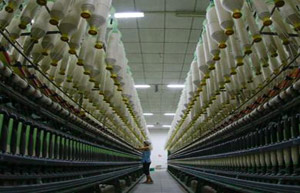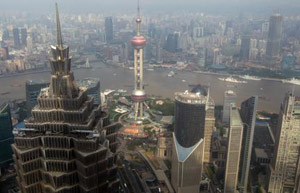While the world's financial recovery could be clouded, there are also enough reasons for optimism
While China's 7.3 percent GDP growth figure for the third quarter is higher than the consensus expectation of 7.2 percent, it indicates the slowest pace of growth since the 2007-09 global financial crisis.
It is the second consecutive quarter in which GDP growth lagged 7.5 percent, a benchmark that had been widely considered as the lowest level that the government was willing to accept.
What remains unclear is whether such a slowdown reflects a fundamental shift in Chinese leaders' approach of putting more emphasis on quality instead of the speed of economic growth.
Alternatively, it may be just a transition through which the many mini-stimulus packages and targeted-stimulus packages are yet to take effect and boost Chinese GDP.
On one hand, a slowdown in Chinese economic growth seems inevitable and even necessary, to help the country successfully manage its transition from an investment-driven growth model to a consumption-driven model. After all, a large fraction of its economic growth has been achieved by pouring increasing investment into the economy, which provides little support to eventual household consumption, and little room for the marketplace to play a greater role in the economy. Hence, some argue that China's growth has to slow down even further if China is to succeed in its target of reforming its economic growth model.
While correct in principle, a sharp slowdown brings considerable concern not only to the government, but also leaders worldwide. Commodities prices, which heavily rely on the speed of global economic growth, have already felt the pinch and dropped across the board since the start of this year. Related to this, the currency and equities markets of some countries rich in natural resources, such as Australia and Canada, have also been experiencing pressure.
A slowdown in China, even a moderate one, casts greater clouds on the pace and even likelihood of a healthy and sustainable global recovery from the fallout of the 2007-09 global financial crisis. China contributed more than one-third of global economic growth at certain points since 2009, and has become the major force in driving the global economy out of recession.
Such heroic efforts did not come without a price and consequences. After the 4 trillion yuan ($654 billion) stimulus package in 2009 and the accompanying tremendous increase in Chinese credit supply, China is now dealing with the aftermath. Bubbles in the real estate sector and many other speculative areas, worsening overcapacity problems in almost all leading industries, and ballooning leverage and debt problem at both corporations and local governments, are now all posing challenges for the next steps in economic reform.
 |
 |
| Flash PMI for Oct brings cheer | New strategy for China's big cities |
